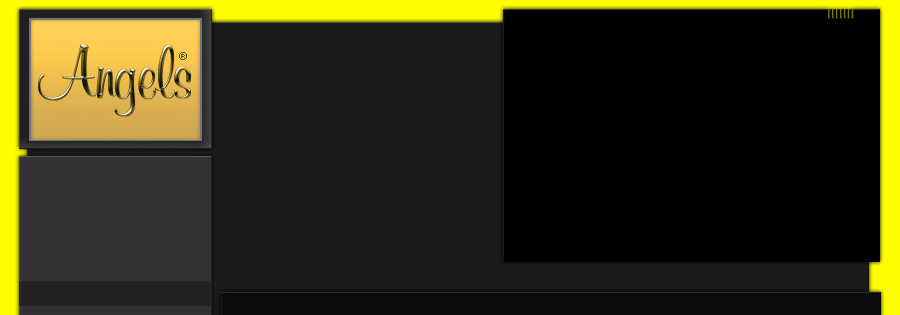|
So! - You Want to be a Model?
First of all - a warning! A good deal
of this section may appear to be designed to put you off being a model!
Quite the contrary. We would like to think that you go into the modeling
business with your eyes open and make a success of it. Regrettably,
it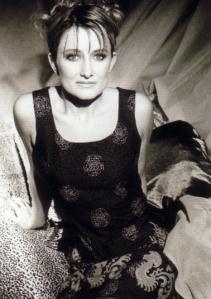 is a business that has more than its fair share of pitfalls, sharks
and rip-offs. We certainly would not like you to fall into any of
the traps that we know about that are laid for unsuspecting hopefuls
in our business. So we have made a point of highlighting what we think
you need to know and what to look out for.
is a business that has more than its fair share of pitfalls, sharks
and rip-offs. We certainly would not like you to fall into any of
the traps that we know about that are laid for unsuspecting hopefuls
in our business. So we have made a point of highlighting what we think
you need to know and what to look out for.
The modeling business is very competitive.
Very few models make it to "supermodel". Having said that,
many make a good career out of modeling (both male and female ) and
many enjoy the business enormously! It can be very rewarding
in more ways than one and, as there are many different types of assignments,
it can be open to almost anyone.
Naturally, there are certain physical
requirements that you need to possess to be a successful 'Haute Couture'
fashion model. If you are tall and slim you have a chance. For
small local and provincial shows 5'8'' / 5'9" may be acceptable.
However, usually the minimum height for shows, cat walk/runway is
between 5' 10" - 6', so if you are tall you have a better chance of
this sort of work. Often clients have fairly fixed views of
what they want and so looks do vary. If you have the look they want
at the time - you are in. However, high cheek bones, big eyes, small
nose and a generous mouth are always positive attributes - if you
are lucky enough to have all the above then you could probably end-up
a supermodel. But not many of us do. If you are male a
strong jaw line and athletic
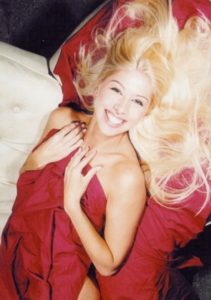 build
(not Mr. Universe) with good shoulders and a well tapered chest to
waist ratio is a plus. build
(not Mr. Universe) with good shoulders and a well tapered chest to
waist ratio is a plus.
Don't be fooled and think it's just
looks that count. On the contrary a good attitude, adaptability
and the willingness to give 110% to your work is essential to make
it in this business. It requires a lot of tenacity, energy and
perseverance. So, if your not prepared to work more than 9am
- 5pm forget it. You will also be required to spend time
going to castings usually at your own cost and whilst an Agent can
get you to the casting that doesn't guarantee the job. It's
up to you! Your social life will be put on hold for a while
as well. As you can't afford to be up all night if you have
a photo shoot the next morning.
To be a successful photographic model
the requirements are similar to the above with the exception of height.
You can get away with being smaller as long as you are in proportion.
You do however need to be photogenic. This is something
you either are or are not. Some people can be stunning to look
at and yet they don't photograph well. The opposite is also
true - you don't have to be stunning to take a good photograph.
The only way to know is to have some photographs taken and see how
they turn out. It's a bit like charisma - you either have it
or you don't and it shows!. Of course with make-up we can do
almost anything but the key to a successful photographic model is
their relationship with 'The Camera'. A good way to gain experience
and confidence without it costing you a lot of money is to offer your
services to a local college or budding photographer as they, too,
require models to work with in order to practice their skills and
techniques. However, be choosey about who you approach and make sure
they are bone fide. See the "Essential Photographs" section below
for further information.
So Many People Ask....................
That all important question!
What is the ideal figure? Well, that really does depend on the
type of work you do. As a guide, if you want to be in
high fashion tall and slender is the key. Most lingerie and
swimwear companies base their products and fittings on a 34B bra size
22/24 waist and 34 hip. If want to work in glamour then the well know
'hour glass' figure is great, 36-24-36. To model shoes and footwear
you normally need to be a size 4.
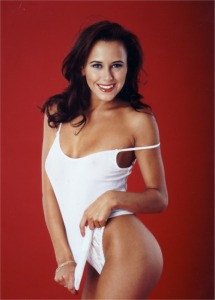 (If
you are feeling metrically challenged at this point, then take a look
at the Angels Conversion Charts by clicking
here). (If
you are feeling metrically challenged at this point, then take a look
at the Angels Conversion Charts by clicking
here).
If you are close to the above measurements,
then you stand a good chance of making it in some way or other if
you apply a high degree of perseverance and are ambitious. If you
are physically nowhere near the sizes mentioned, then there is little
chance that you will have a successful career in the modeling industry.
Time to be honest with yourself!
There are however, other opportunities
for some people to specialize in hand modeling or feet, or legs, or
eyes etc. This may be a possibility for you and something you
can explore if you think you have what it takes.
Another avenue is to be an 'in house'
model where specific statistics will vary depending on the manufacturers
requirements. Be warned ! You are usually measured every week
for this and cannot fluctuate. Show room seasons usually run
for 6 weeks at a time and are a good way to earn regular income.
So to re cap the options are:
-
Haut Couture/Fashion
- Catwalk (Runway)
-
Photographic - Commercial / Print / Glamour
-
Show Room - Specific Manufacturers requirements (Can be seasonal)
-
Specialty - Hands, Legs, Eyes etc.
Which ever you decide
remember - unless you are signed up with a company with a termed contract
(and very few are) there is no guarantee of a regular income. It will
vary enormously from day to day, week to week, month to month.
Nothing one day, 1000's the next and back to nothing again. So be
prepared.
The Truth About Agents
Many unscrupulous people
posing as 'agents' in the modeling world have come up with all sorts
of ways to part you from your money. So here is some advice that will
save you money - DON'T GIVE IT AWAY!
Remember, if an agency asks you for money, by way of a joining fee,
forget it (they are not allowed to in the UK now! - see next
paragraph). Most reputable agencies will not request money to
register. They may suggest you have some photos taken and point
you in the direction of a photographer (if you have none) and they
may at some stage ask you if you would like to be included in their
model year book or head sheet or similar but this is something quite
separate to a joining fee or registration fee and can be done in stages.
Do not be pressurised into paying out for anything and especially
not to join an agency. Portfolios and composite cards are tools
of the trade and whilst it may be worth your while at some point in
your career to invest in a comp card, you should not have to do this
in order to join an agency.
One recent change in the UK is the introduction
of the Conduct of Employment Agencies and Employment Businesses Regulations
which came into force in April 2004. This places more legal controls over
what agencies can and cannot do. One immediate change is that UK model
agencies are NOT allowed to charge up-front fees and they are NOT allowed to
link joining the agency with the purchase of other goods or services.
That's great news for models, great news for legitimate model agencies and bad
news for the rip-off and scam agencies!
Here is another misguided
thought about the model business: There is an assumption that if you
register with an agent/agency and send in some photographs the work
will roll in.
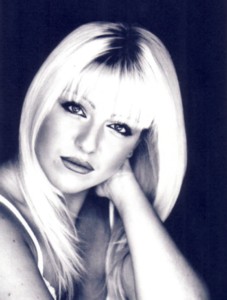 All
you have to do is sit and wait for the phone to ring. Unfortunately,
this is not true (unless you happen to be Naomi Campbell or Claudia
Schiffer)! All
you have to do is sit and wait for the phone to ring. Unfortunately,
this is not true (unless you happen to be Naomi Campbell or Claudia
Schiffer)!
There is also a difference
between a model 'agency' and an 'agent'. If you have a personal
agent and you are signed exclusively to them (or even if you are signed
exclusively to an agency) then they should be working on your behalf to find you work on a
regular basis.
Many model agencies
represent a host of models and will circulate the details of all through
different media, i.e. model books, head sheets and more recently websites.
They will also respond to a clients request and send out information
on the people who most closely represent the clients need. Ultimately
it is usually the client who decides who they want. So the better
your photographs are and the more versatile they are, the more chance
you have of catching the eye, then you will get the call!
No true agency will guarantee work for you. Some agents may
wish to sign you exclusively and if they do they should offer a contract.
Make sure you read the terms of the contract very thoroughly before
signing anything. Our personal recommendation for a beginner
would be to join as many agencies as they can (none exclusively) and
take it from there.
To Re-Cap ............
What Not to Pay For
You should never have to pay for joining
an agency. If an agency says that there is a "joining fee" or a "sign
up" fee, then our advice would be to look elsewhere. Remember
that in the UK you are protected in this respect.
You should never have to pay for a
portfolio of photographs as a condition of joining an agency.
Some agencies will say that you need
a good portfolio and that they will provide, for a fee, an appointment
with a local photographer to get this done. Firstly, a good portfolio
is generally built up over time as a result of work that you have
done. So don't pay for one. Secondly, you should not have to
pay 'an arrangement fee'. Thirdly, as said before, a good portfolio
will be made up of many different shots from different jobs at different
times which includes different photographers and can not possibly
be made from one session.
The Truth About Modeling
Schools
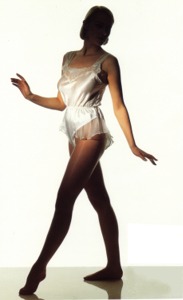 Much
like the truth about agents! Be careful. It is not unheard of for
modeling schools to take you on even though you have no real chance
of making it in the business. Some of them are, after all, only in
it for the money. Our best advice here is to be totally honest and
brutal with yourself. If you really believe you pass the standards
highlighted at the beginning of this section, then go for it! If you
do not, then no amount of model school effort is going to turn you
into something you are not. There are a lot of disappointed potential
models around who thought that school attendance would guarantee them
a living in the modeling business. It does not. Much
like the truth about agents! Be careful. It is not unheard of for
modeling schools to take you on even though you have no real chance
of making it in the business. Some of them are, after all, only in
it for the money. Our best advice here is to be totally honest and
brutal with yourself. If you really believe you pass the standards
highlighted at the beginning of this section, then go for it! If you
do not, then no amount of model school effort is going to turn you
into something you are not. There are a lot of disappointed potential
models around who thought that school attendance would guarantee them
a living in the modeling business. It does not.
There are quite a number of very reputable
modeling schools around. Check them out. Check them out with other
people in the business. Check them out with people you may know who
have been there already. Word of mouth and personal recommendation
is a powerful ally of a good school. Make sure you ask the schools
about their successes. You should interview them too! Ask them if
they reject people who they do not think will make it. Its a very
telling question!
Those Essential Photographs
A good photographic portfolio is essential if you
are going to succeed in the modeling business. As you will see elsewhere
on the Angels web site, other branches of the industry do not have
such stringent standards. A model will trade on his or her portfolio
 and
a good portfolio is a made up from modeling assignments and is a showcase
for the skill and expertise of the model. It is and a full set of
examples of the type and style of work carried out and is not the
result of an individual photo shoot with one photographer. Of
course, you cannot start out with a full personal portfolio. So where
do you start and what are the basics to get going? and
a good portfolio is a made up from modeling assignments and is a showcase
for the skill and expertise of the model. It is and a full set of
examples of the type and style of work carried out and is not the
result of an individual photo shoot with one photographer. Of
course, you cannot start out with a full personal portfolio. So where
do you start and what are the basics to get going?
If you want to succeed as a model, forget the instamatic camera and
the local photo booth! (Believe us when we tell you that we have seen
the output of both submitted to Angels as a portfolio!). You will
have to be prepared to get some photographs done professionally. You
will not always need to pay for them however. There is an arrangement
in the model world called "Time For Prints" or TFP. This is
when a Professional photographers will use you as the model and instead
of paying you a fee will give you prints from the assignment. So the
deal is that you provide your time for a photo shoot and in exchange
you get a set of professionally taken prints. It is a very good way
of getting your portfolio started.
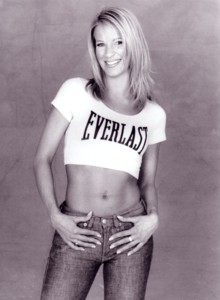
If you can afford it, then you can get a professional set of photographs
from any number of reputable photographers. But note our comments
above about dubious links between agencies and photographers.
Most models start with a "comp card" . This can be in black and white
or colour. It will generally be A5 in size or approximately 8" x 6'.
It will have a full size photograph on the front, which can be a head
shot or full length shot, and generally up to four photographs on
the back. You can mix black and white and colour photographs - in
fact it is a good idea to have both. The card should have your vital
statistics on it - including height, hair colour, eye colour, dress
size, bust size, waist size, hip size
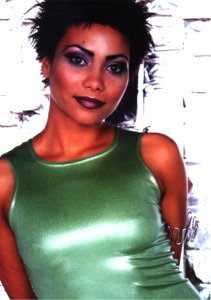 and
shoe size. You will see, for example, that this is the kind of information
displayed against the portfolios on our web site. and
shoe size. You will see, for example, that this is the kind of information
displayed against the portfolios on our web site.
When ever possible you should have full 10" x 8" colour and black
and white versions of photographs. These are most beneficial
for agencies like Angels who have web sites that your photographs
can be shown on. Only high quality original photographs will give
a high quality scanned image on a web site. Scans taken from cards
or printed material will always be of lower or poorer quality.
Finally, what type of photographs should you have? As you will see
from other portfolios or comp cards, you should present a range
so that both the agent and the client will have a good idea of your
overall capability and looks in a variety of poses and situations
- both full length and close up. Its all about making an instant impression!
So make sure that you do not end up with five photographs on a card
that are all the same background and all in the same clothes. Those
tend not to work.
Signing Up with
an Agency
Firstly, find out when
an agency is holding interviews. Make some phone calls. Reputable
agencies should always see new faces and the more professional agencies
will always want to see you before taking you on their books.
Some will interview on a regular basis and others will only interview
at certain times during the year.
Secondly, if you are completely new to this industry, make sure that
the agency you would like to join takes on beginners. Some agencies
only take on fully professional people. You do not want to waste their
time or yours!
When going for the interview make sure you take all your information
with you. There is nothing more infuriating to an agency that has
made time available to see you than to have you turn up for an interview
empty handed. You should take an up-to-date Curriculum Vitae (resume)
which should be complete with all you personal details as well. You
should also have to hand any other information which you think will
be relevant to the interview for example: special skills or areas
you can work away from the area where you live. Make sure you
have your correct measurements with you and don't make these up -
there is no point. Do not forget to take your photographic portfolio,
as well as your comp cards, and take enough cards to leave some with
the agency. If you still do not have any professional photographs,
take any photographs you do have of yourself for reference.
What to Expect or Not !
Do not expect to be an overnight success!
If you are accepted by an agency, you
can expect to do quite a lot of leg work, especially in the beginning.
Going to see photographers, clients and to castings is all part of
the job. Sorry no pay for this part, but if you get the job
then it's worth it!
Good Luck!
All of the material in the Advice
Section of the Angels® web site is
Copyright © Angels Model & Promotion Agency® and cannot be reproduced or
copied
in any form without the prior written consent of Angels®.
|
